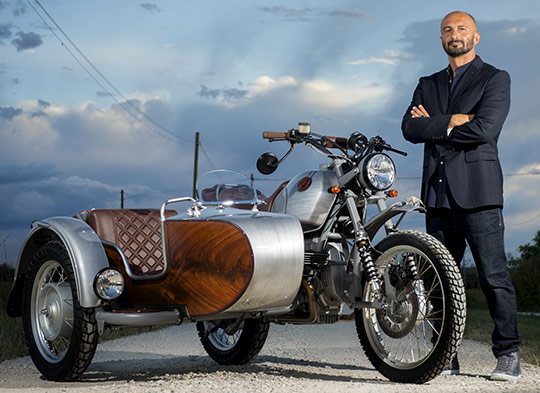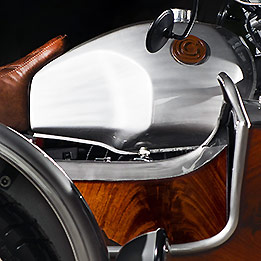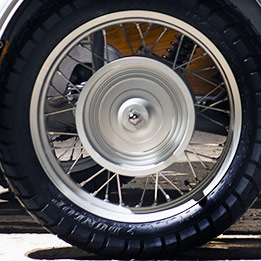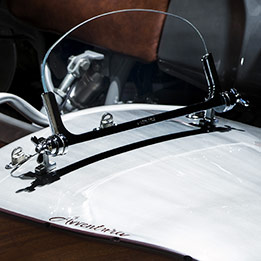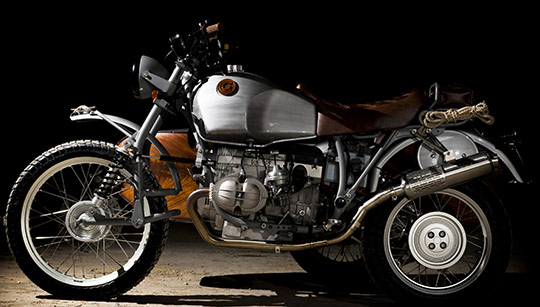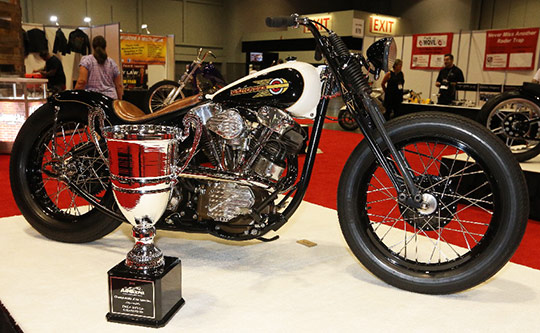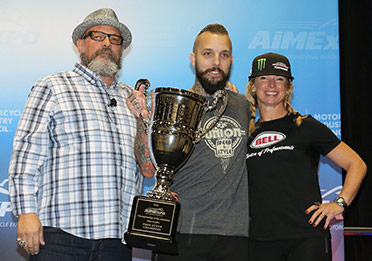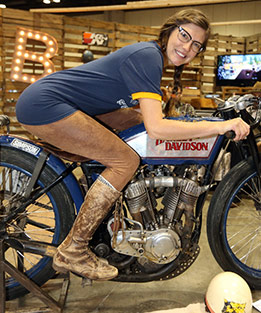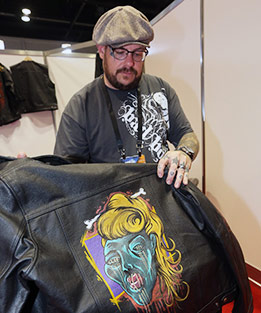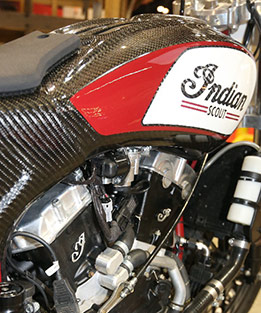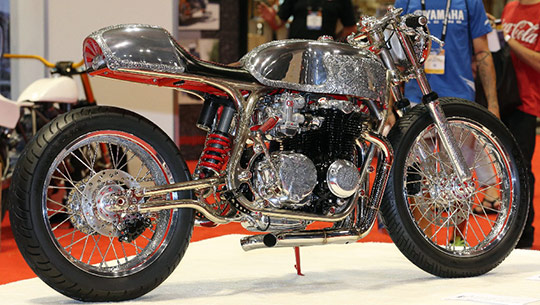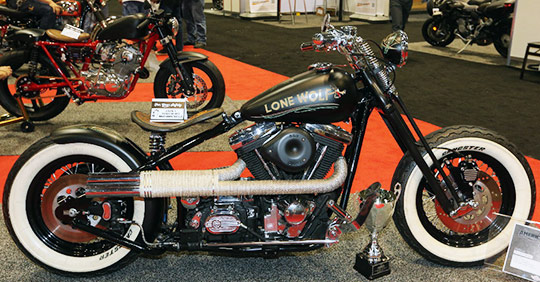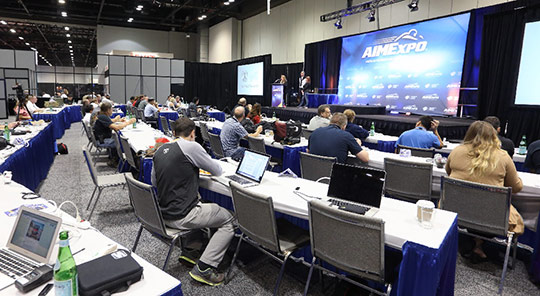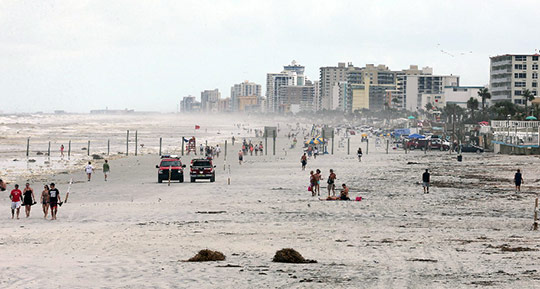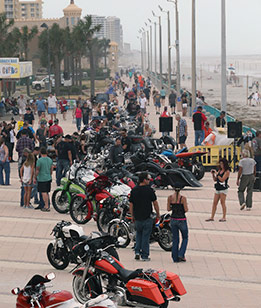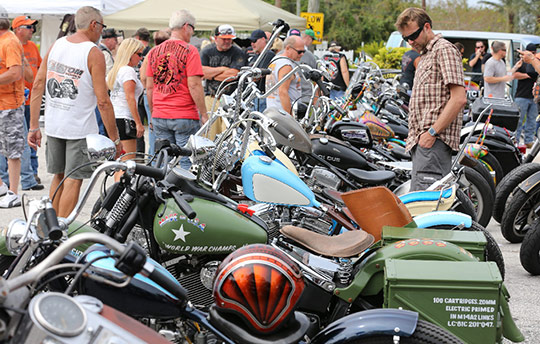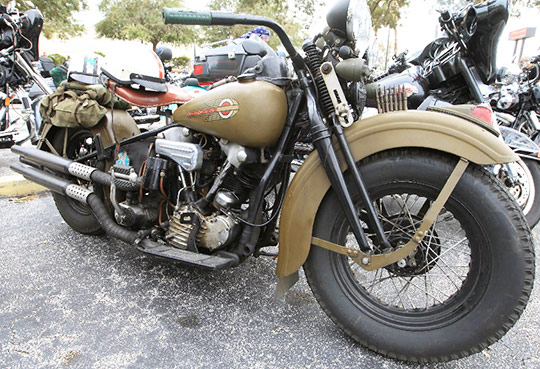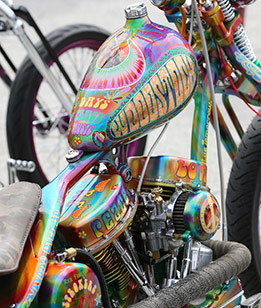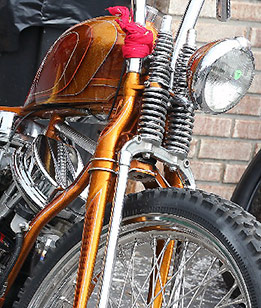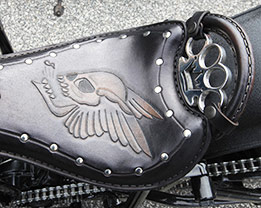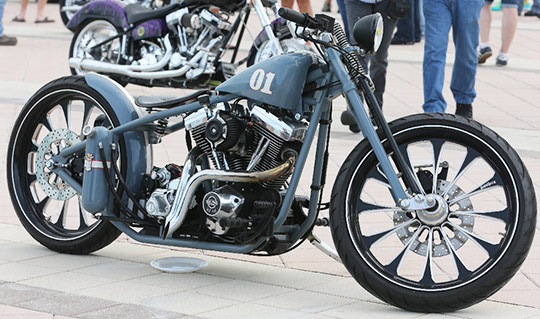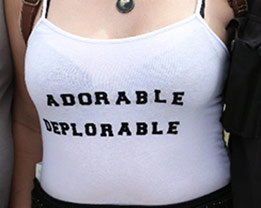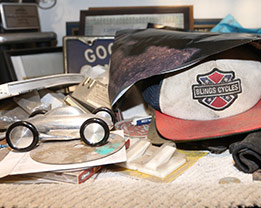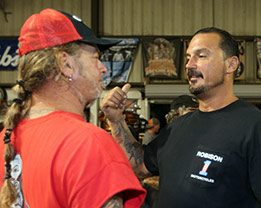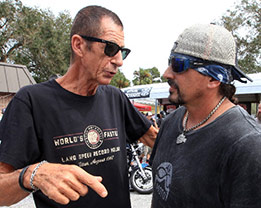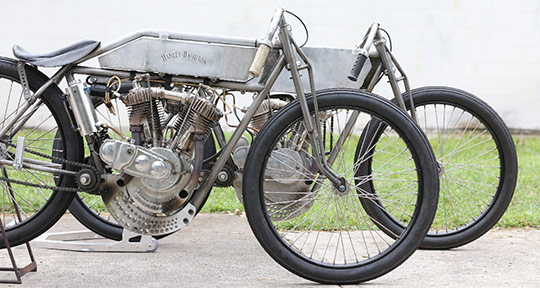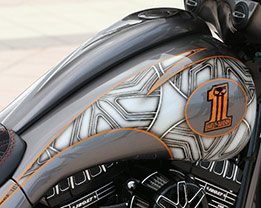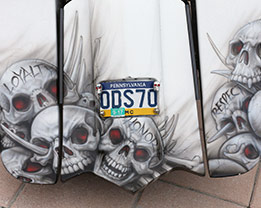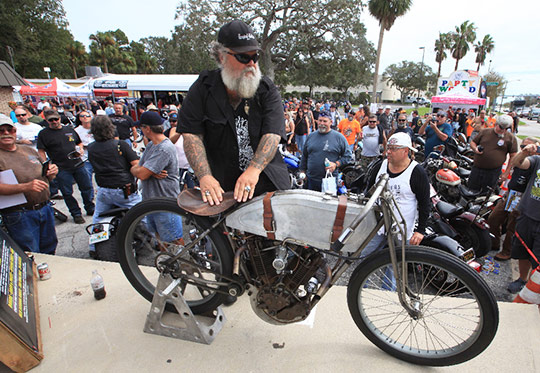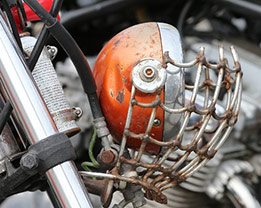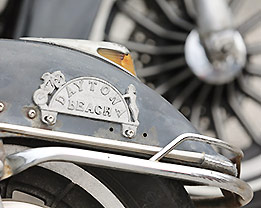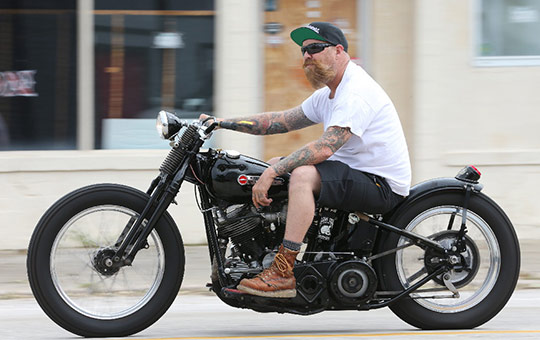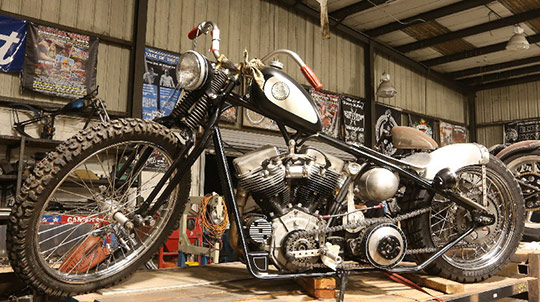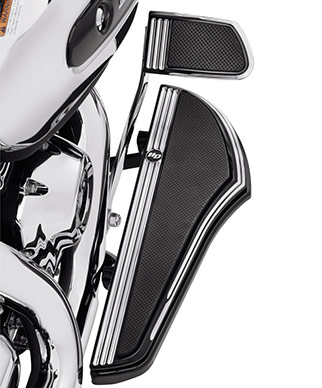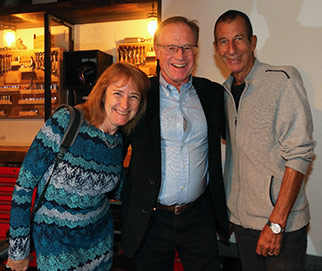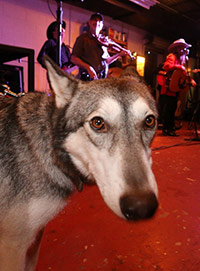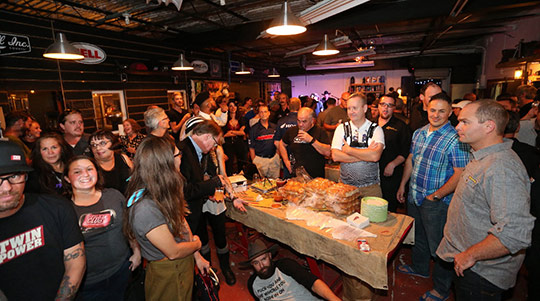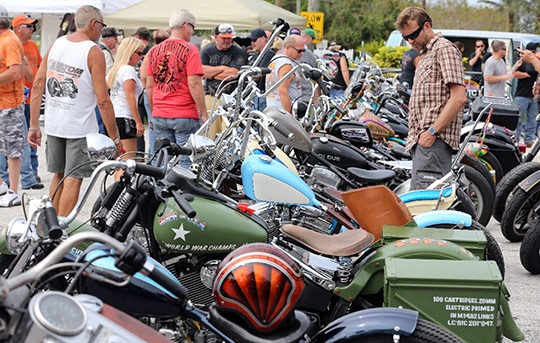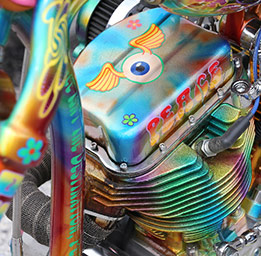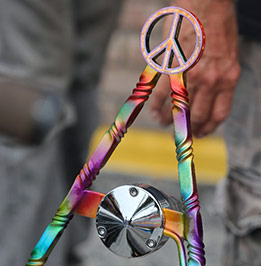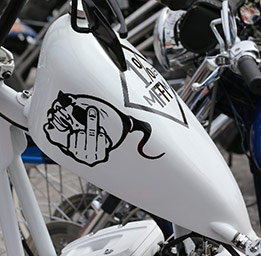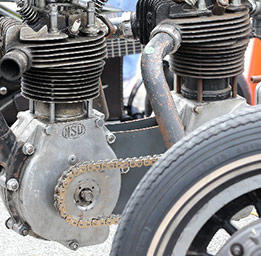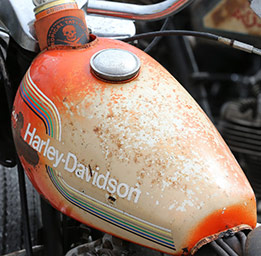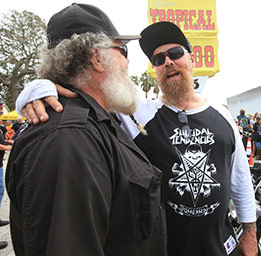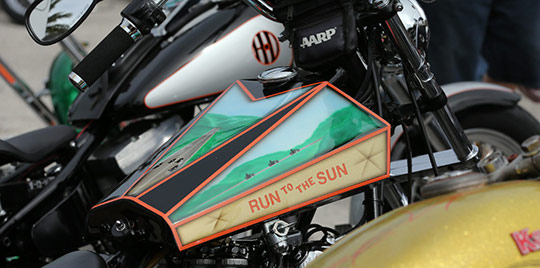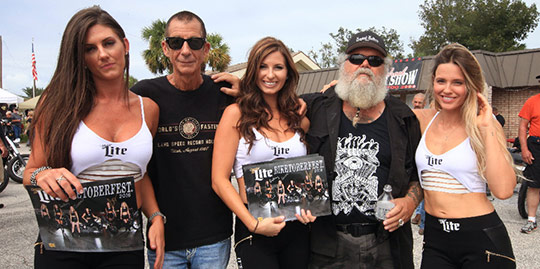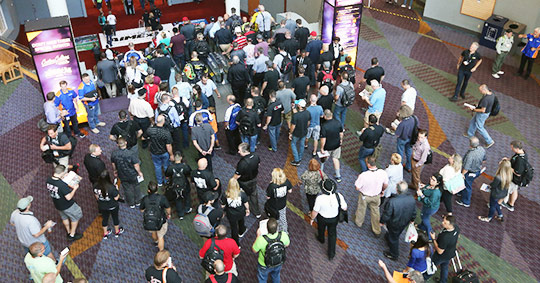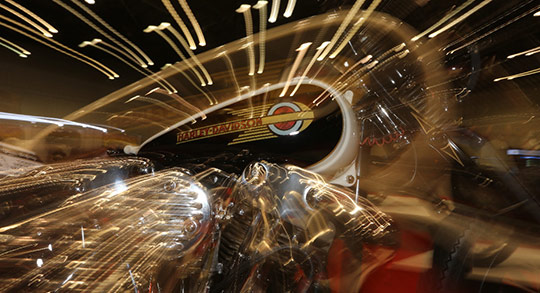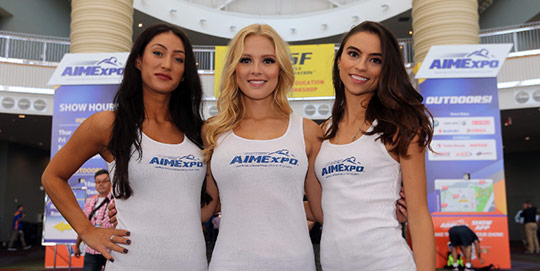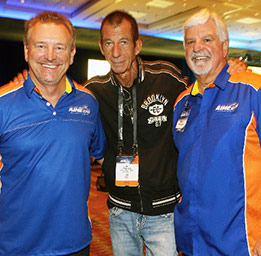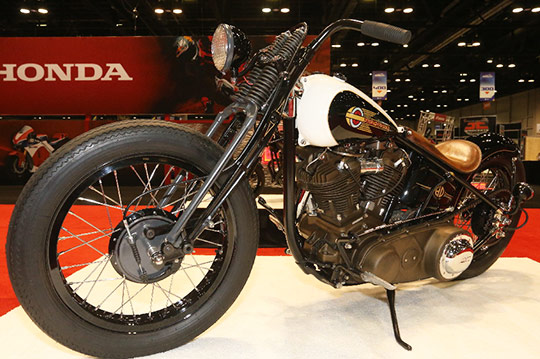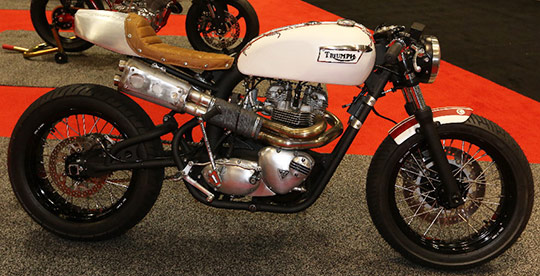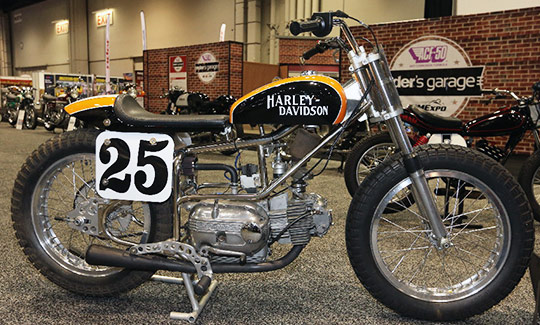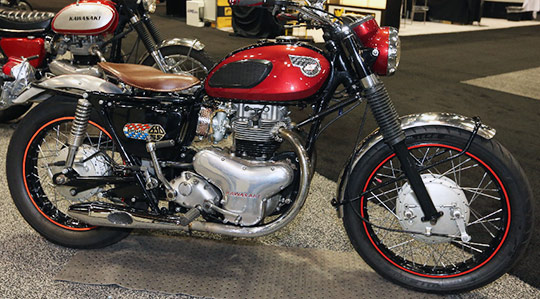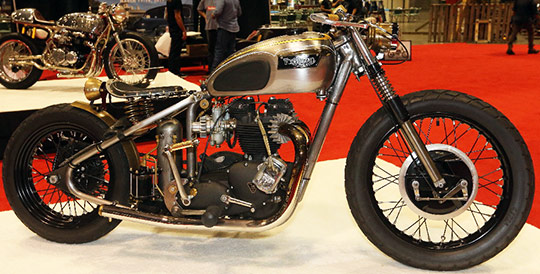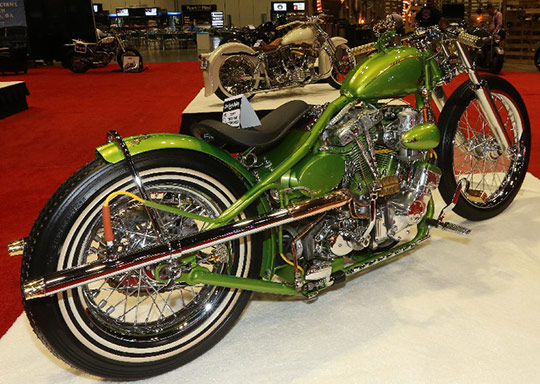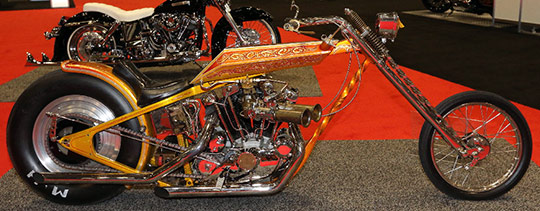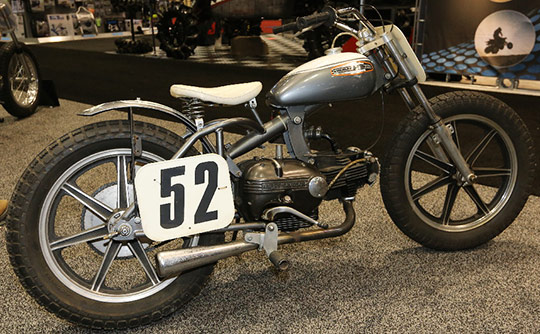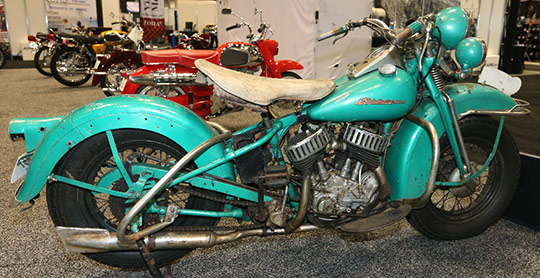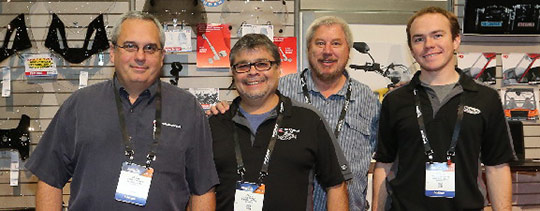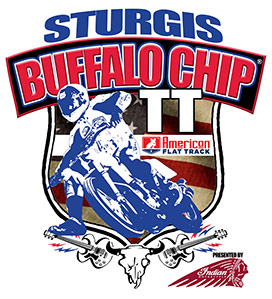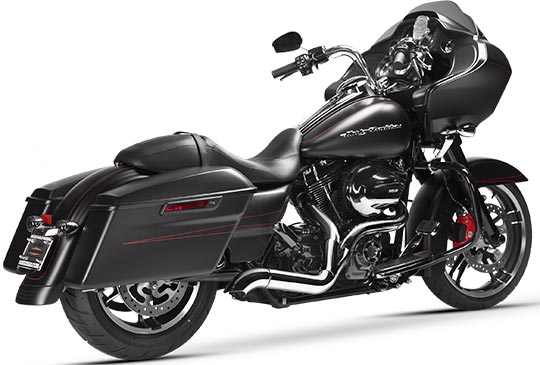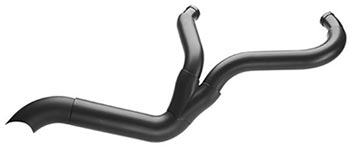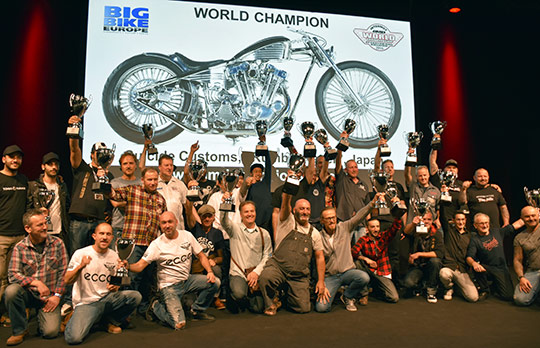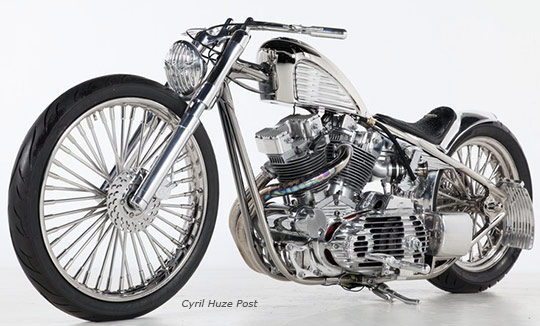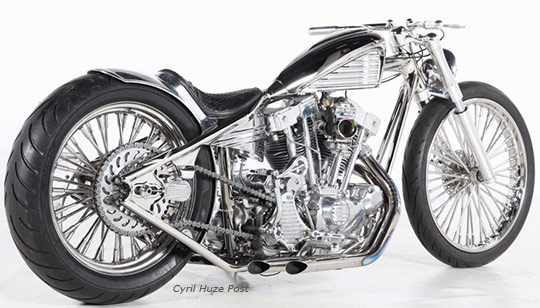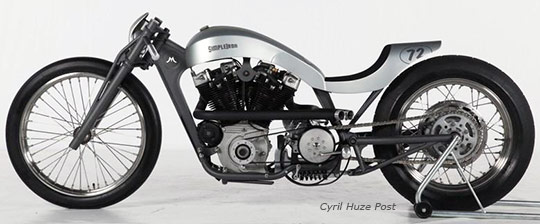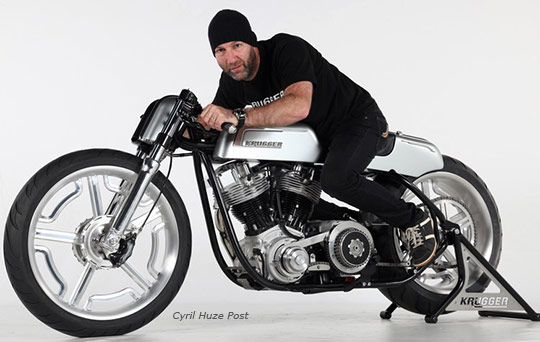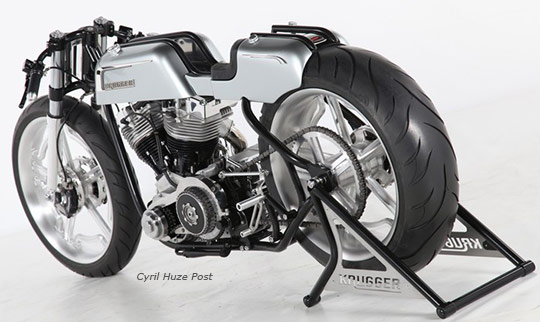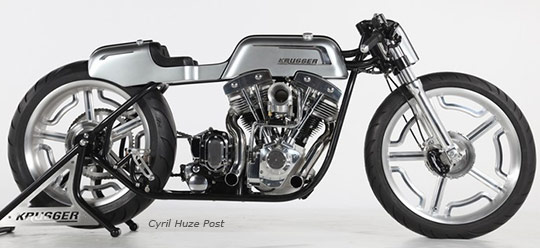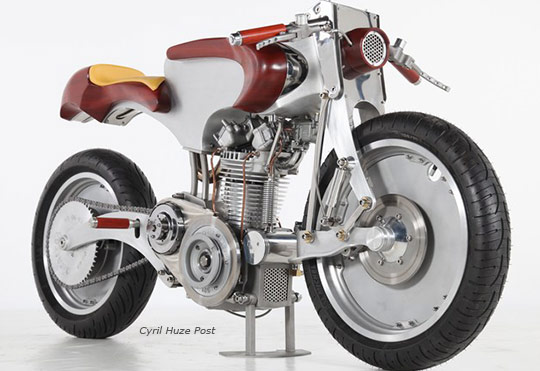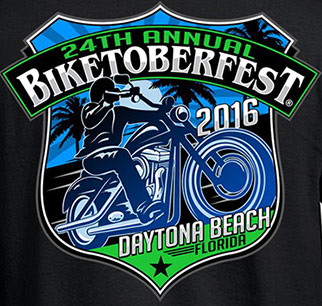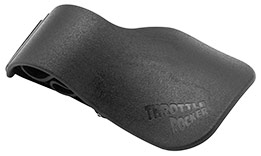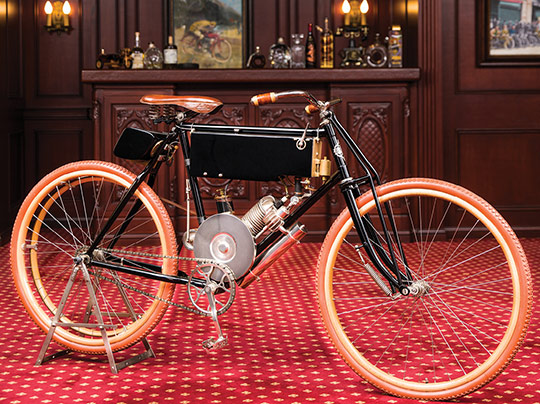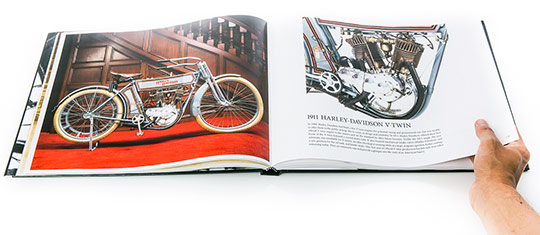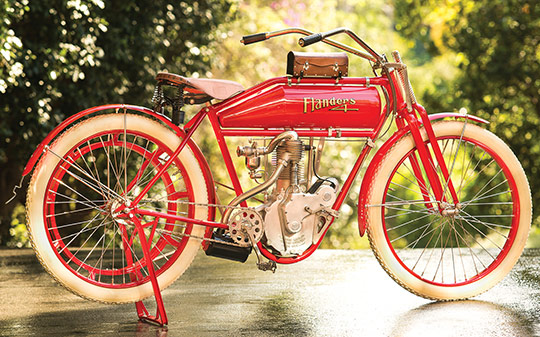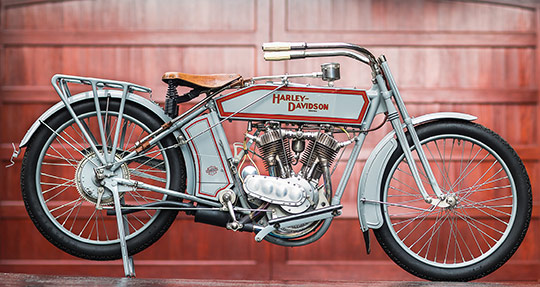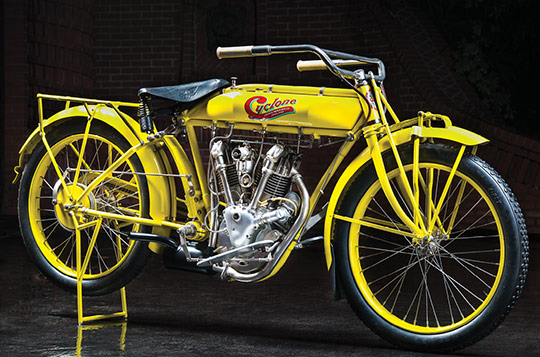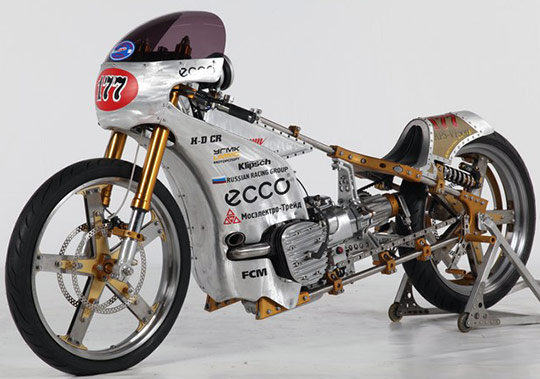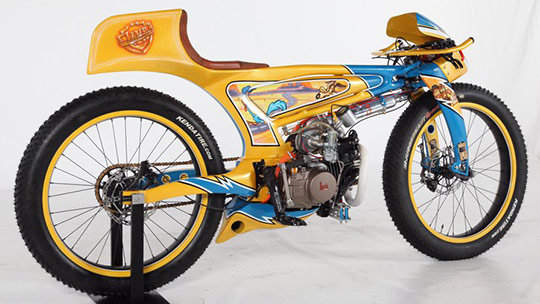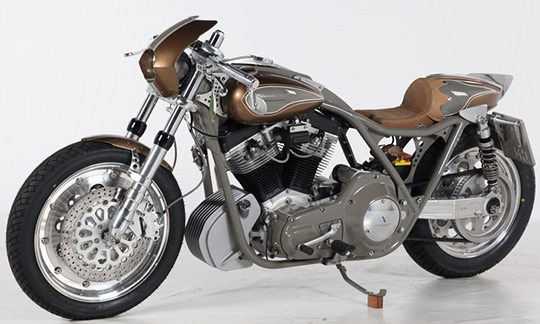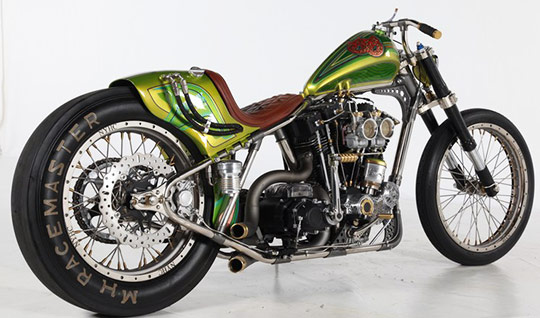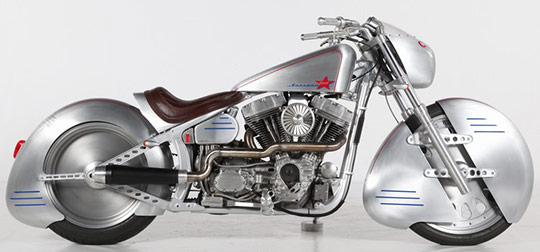
 I spent this Tuesday afternoon at the shop of Billy Lane in Ormond Beach, Florida for the interview below. As soon as I arrived Billy informed me that unfortunately he had to take the decision to postpone the inaugural Sons Of Speed Race due to the effects of hurricane Matthew (see today’s picture of collapsed stands at the Smyrna Beach Speedway). The race is now scheduled March 17-18 during the 2017 edition of Daytona Bike Week. Ticket holders can keep their tickets for access to the race in March or will be refunded if they don’t intend to participate to the coming edition of Daytona Bike Week.
I spent this Tuesday afternoon at the shop of Billy Lane in Ormond Beach, Florida for the interview below. As soon as I arrived Billy informed me that unfortunately he had to take the decision to postpone the inaugural Sons Of Speed Race due to the effects of hurricane Matthew (see today’s picture of collapsed stands at the Smyrna Beach Speedway). The race is now scheduled March 17-18 during the 2017 edition of Daytona Bike Week. Ticket holders can keep their tickets for access to the race in March or will be refunded if they don’t intend to participate to the coming edition of Daytona Bike Week.
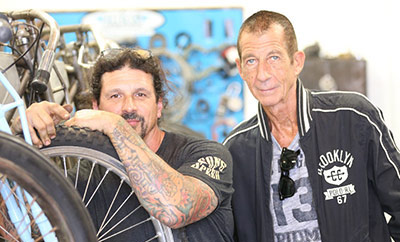 Billy Lane’s inaugural Sons of Speed vintage motorcycle racing, now scheduled in March 2017, will be a major highlight.
Billy Lane’s inaugural Sons of Speed vintage motorcycle racing, now scheduled in March 2017, will be a major highlight.
Riders astride hand-built chassis holding pre-1925 American v-twin engines are going to fight hard in several heats to advance to the championship round. A great show not to miss in the pure tradition of the 20’s and 30’ board-track racing.
 Cyril. About 8 years ago, in a private conversation, you told me about your concept of organizing races inspired by early twentieth-century board-track racing on old banked racetracks. Your inaugural Sons Of Speed event that should have happened a few years ago is going to take place in a few days during Daytona Biketoberfest, October 15 (with practice the day before) at the New Smyrna Speedway. During the last 18 months, AMA pro-flat track racing has been successful in attracting a new public to the sport, to the point that AMA is establishing new rules making each event easier to understand by spectators. At the same time Indian has been successfully sponsoring the Scout Sixty Hooligans dirt track racing with about 10 events around the US. And now, with its new FT 750 bike, Indian is returning to the track, ready to challenge Harley-Davidson after a 60-year absence. Although these events are different from yours, you anticipated by quite a few years the trend towards old school and vintage racing. How do you explain this renewed excitement for the sport, and why now?
Cyril. About 8 years ago, in a private conversation, you told me about your concept of organizing races inspired by early twentieth-century board-track racing on old banked racetracks. Your inaugural Sons Of Speed event that should have happened a few years ago is going to take place in a few days during Daytona Biketoberfest, October 15 (with practice the day before) at the New Smyrna Speedway. During the last 18 months, AMA pro-flat track racing has been successful in attracting a new public to the sport, to the point that AMA is establishing new rules making each event easier to understand by spectators. At the same time Indian has been successfully sponsoring the Scout Sixty Hooligans dirt track racing with about 10 events around the US. And now, with its new FT 750 bike, Indian is returning to the track, ready to challenge Harley-Davidson after a 60-year absence. Although these events are different from yours, you anticipated by quite a few years the trend towards old school and vintage racing. How do you explain this renewed excitement for the sport, and why now?
Billy. The bikes we ride today are all derived from century old racers. Motorcycles surely would not have advanced as far or as quickly as they have, without board-track and flat-track racing. I think companies like Harley-Davidson and Indian must each rely on the strength their heritage to compete with modern cycles from abroad- and of course with each other. Both companies’ heritage is deeply rooted in racing. Flat track is becoming popular because it is relatively inexpensive to do, and it is a lot of fun. Board track racing has not blossomed, but the bikes themselves are wildly popular. I believe this is because of the expense of a banked speedway, the frailty, rarity, and high value of the original machines- combined with a lack of information regarding how to keep one running long enough to enjoy it. But, this will change. Nothing is more gorgeous than seeing a board track racer on a slant. You and I did talk about this years ago. Indian Larry and I talked about it. We both loved the raw, mechanical simplicity of early gasoline engines. Watching them run is mesmerizing. Indian Larry would be on the track at Sons of Speed, if he were still physically here. And, damn, I wish he was. The OEM’s have, for years, mimicked what is happening in the custom & aftermarket world, with a significant amount of lag time… What is happening with them now is no different.
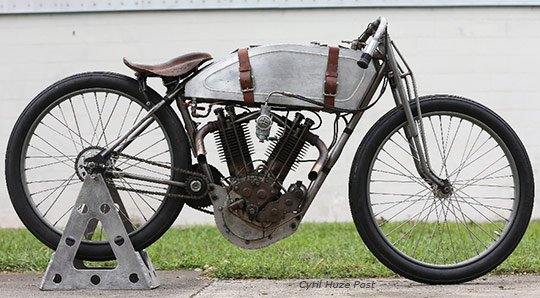 Cyril. We all know in the industry that to find old motors to be rebuilt is relatively easy if you are ready to spend a lot of time looking for them…and a lot of money. And you own quite a few of these pre-1925 American engines. But we also know that it’s much more difficult, and most of the time impossible, to find the original genuine parts to rebuild the bikes where these motors were cradled. So, explain how were built the bikes that will be raced in Smyrna Beach. How many of these bikes did you build yourself?
Cyril. We all know in the industry that to find old motors to be rebuilt is relatively easy if you are ready to spend a lot of time looking for them…and a lot of money. And you own quite a few of these pre-1925 American engines. But we also know that it’s much more difficult, and most of the time impossible, to find the original genuine parts to rebuild the bikes where these motors were cradled. So, explain how were built the bikes that will be raced in Smyrna Beach. How many of these bikes did you build yourself?
Billy. It used to be that these early engines were mainly a novelty to most, and only coveted by a small circle of collectors and enthusiasts. The World grew a little smaller, and it got to the point where engines were relatively abundant, and price might be the only reason to pass on one. Demand, now, is so high that we seldom see a complete, quality engine for sale. There just aren’t that many old engines left to pick. And those who are holding, are holding on to what they’ve got. Now, they’re highly priced commodities. All of this happened in a very short span of time. Complete bikes, pre-1935, are a rarity. So many of them were scrapped during the Great Depression and to arm and armor World Wars I & II. Motorcycle construction was frail, roads were rough, information was scarce, and obsolescence ran in step with time. Motorcycles didn’t survive, but owners would sometimes keep the engines for use in another machine, as a source for parts, or as a power source for some sort of implement. Which left us with a surplus of engines and a shortage of motorcycles to put them in. I’ve solved this problem with Sons of Speed. Rather than scour the Earth in search of old parts, I decided to make modern versions of the century old motorcycles that used to cradle these amazing engines. Modern materials and construction allow me to build a lighter, faster, more affordable version of the spectacular board track racers that thrilled crowds from 1909-1930.
 Cyril. How were chosen the first 8 racers belonging to the inaugural race, and what specific qualities they must own to race on a steeply banked racetrack? Who are they? And what machines they are going to ride?
Cyril. How were chosen the first 8 racers belonging to the inaugural race, and what specific qualities they must own to race on a steeply banked racetrack? Who are they? And what machines they are going to ride?
Billy. Choosing riders for this inaugural race was complicated. Diversity in the riders was a must, because motorcycling attracts such a diverse crowd. I wanted people I know personally, because dependability and trust are built-in. I also sought out enthusiasm for this type of racing. The biggest challenge was to find motorcycles to race. Most of the board track racing motorcycles we’ve all seen are highly expensive and collectible static displays, either in books, collections, or in museums. They will never be run or ridden. I was initially prepared to build twelve complete racers, myself- with my own money, on my own time- and hand pick riders for them. Too many people, however, were a disappointment and let me down… I regrouped, and we have eight riders ready for the October 15th Sons of Speed race. Our racers are; (1) Shelly Rossmeyer-Pepe, riding her 1915 Harley-Davidson powered Sons of Speed racer, which I built completely. (2) Warren Lane, riding his 1920 Indian Powerplus, in a Sons of Speed chassis I built for him. (3) Matt Walksler, riding his 1922 Harley-Davidson 1/2-mile racer 4) Rick Petko, riding his 1919 Indian Powerplus, in a Sons of Speed chassis I built for him (5) Buzz Kanter, riding his 1915 Harley-Davidson powered Sons of Speed racer, which I built completely (6) Jay Allen, riding my 1912 Flying Merkel powered Sons of Speed racer, which I built completely (7) Brittney Olsen, riding her 1923 Harley-Davidson 1/2-mile racer (8) Me, riding my 1913 OHV Perry Mack powered Sons of Speed racer, which I built completely. Moving forward, I’d like to open the event up to the public, so that anyone with a suitable machine and riding skills may race in Sons of Speed. Continue reading ‘Exclusive Interview With Billy Lane About The Inaugural Sons Of Speed Board-Track Racing’
 German-Motorcycle-Authority (Christoph Madaus) with his 1340cc (S&S heads) “Milwaukee Mile”.
German-Motorcycle-Authority (Christoph Madaus) with his 1340cc (S&S heads) “Milwaukee Mile”. Kharkov, Ukraine based Iron Custom Motorcycles (ICM) with “Beckman”, featuring a hand-made 56bhp, 555сс 3-cylinder 2-stroke engine.
Kharkov, Ukraine based Iron Custom Motorcycles (ICM) with “Beckman”, featuring a hand-made 56bhp, 555сс 3-cylinder 2-stroke engine.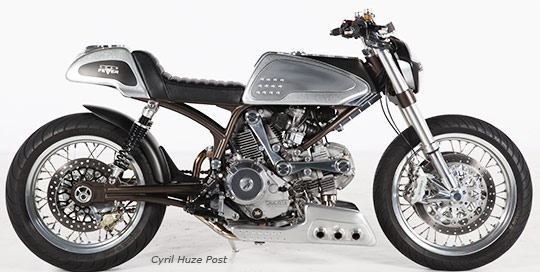 2013 World Champions Mick O’Shea and Don Cronin (Medaza Cycles) with “Road Fever”, a 1978 Ducati 750.
2013 World Champions Mick O’Shea and Don Cronin (Medaza Cycles) with “Road Fever”, a 1978 Ducati 750.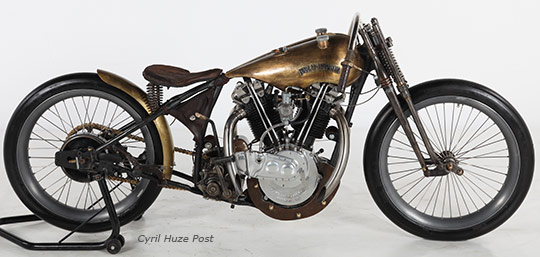 Motocyclette of Italy with “Big Kahuna”, a 1000cc engined 1927 JD 8-valve.
Motocyclette of Italy with “Big Kahuna”, a 1000cc engined 1927 JD 8-valve.
